At a critical moment for our societies and cities, Santander, Future Habitat is a proposal aware of the limits, needs and opportunities. It is articulated from the neighbourhoods to solve daily problems with strategies that have a scope throughout the city. It is true that it is difficult to know what the world will be like in the year 2055, but it is possible to analyze Santander today, understanding how global trends and local factors will influence each of its dimensions. This is what the city model does: it anticipates strategies, guidelines, proposals, criteria, intentions and objectives that urban planning must later develop and process. Thus, this city model is a preview of the next Urban Plan that enables decision-making at a local scale without losing the relationship with the great impacts and global challenges, with agreed and participated bases capable of defining the roadmap of the public policies in alliance with the different social agents for a more just and regenerative Future Habitat. And it does so through four strategies to improve the city, six transversal projects and a neighbourhood plan.
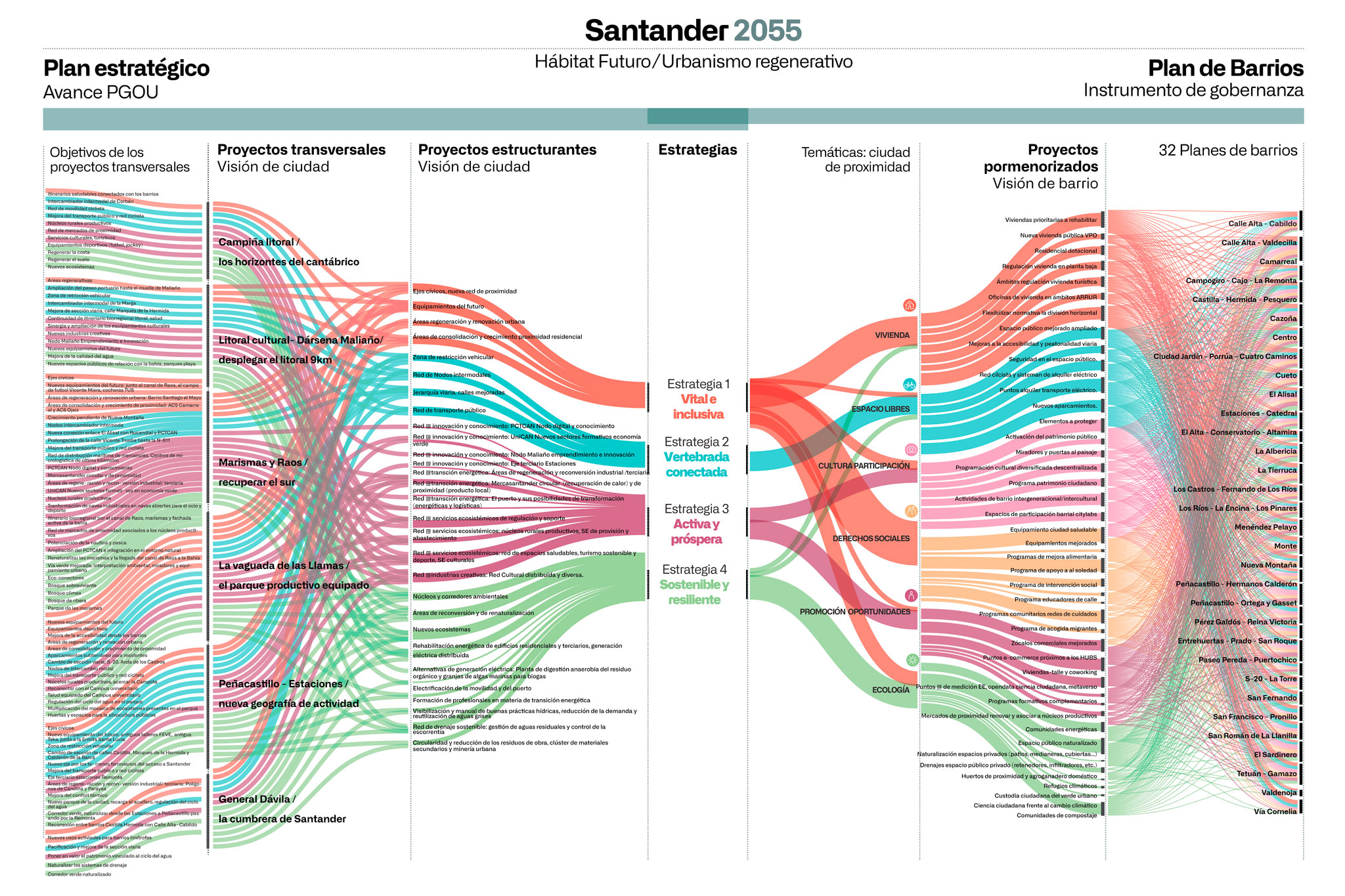
Santander, Hábitat Futuro por LANDLAB / Paisaje Transversal.
Santander, Future Habitat establishes four strategies that demonstrate the present and future commitment of the city to the great global challenges and, at the same time, enables decision-making at a local level.
1.
Vital and inclusive Santander designs "the city of 15 minutes” for the neighbourhoods of Santander, a model where all daily needs are covered at the distance of a walk or bike ride. A city on a human scale, welcoming for everyone, with all the services, equipment and activities connected by a network of civic streets and itineraries that directly influence the quality of urban life. This strategy is the conceptual core on which the Neighborhood Plan is based.
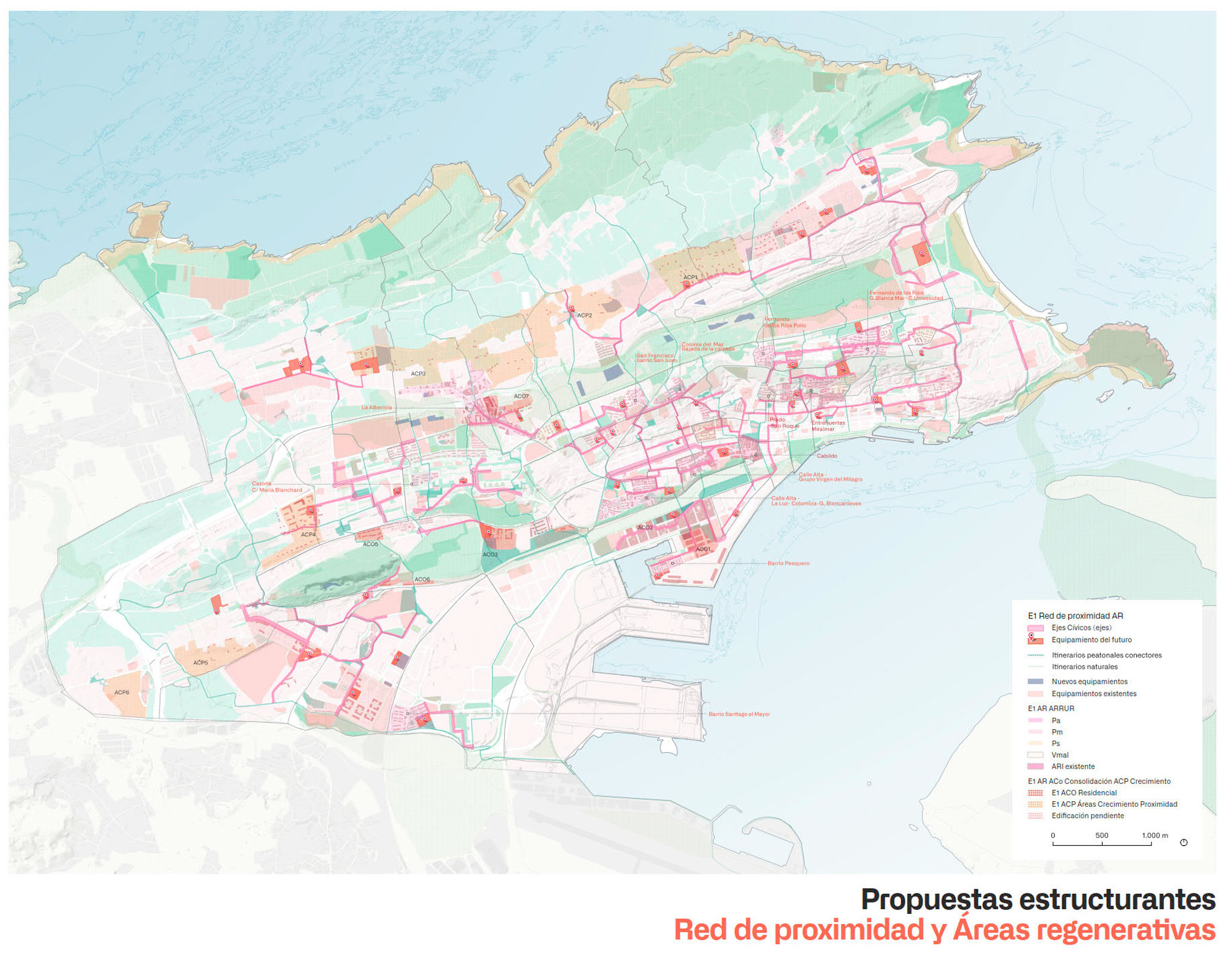
Santander, Hábitat Futuro por LANDLAB / Paisaje Transversal.
2.
Vertebrate and connected Santander facilitates the infrastructures and necessary systems to promote modal diversity and decarbonize complete and progressive mobility. The strategy proposes to promote active, pedestrian and cyclist mobility within the city, with friendlier public spaces and multimodal nodes that decongest the urban area and provide collective, efficient, distributed and electric transport.

Santander, Hábitat Futuro por LANDLAB / Paisaje Transversal.
3.
Active and prosperous Santander proposes to strengthen, through the innovation and energy transition, facilities and economic sectors that the city already has, implanting a circular and local economy that adapts to future changes. The model updates and adapts the economic sectors that, for its natural resources and its location are strategic for Santander and can attract investment and professionals.
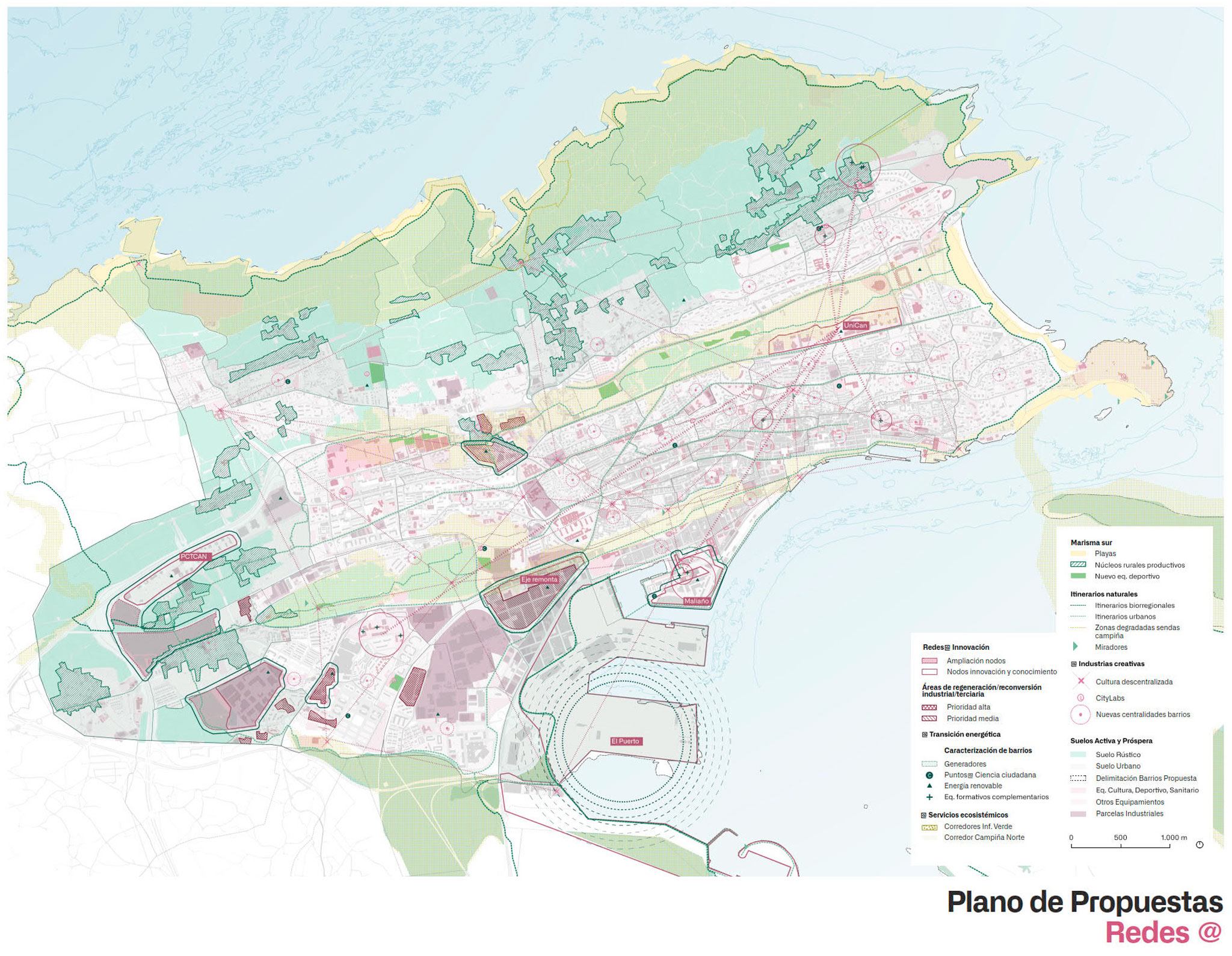
Santander, Hábitat Futuro por LANDLAB / Paisaje Transversal.
4.
Sustainable and resilient Santander defines a strategy that guarantees the success of ecological processes of the city with the objective of regenerating relationships with their natural environment and/or rural areas, both at a municipal and regional level and defines proposals for efficient use and treatment of water cycles, energy and waste and their resources, reducing the impact of the human activity and ensuring circularity.
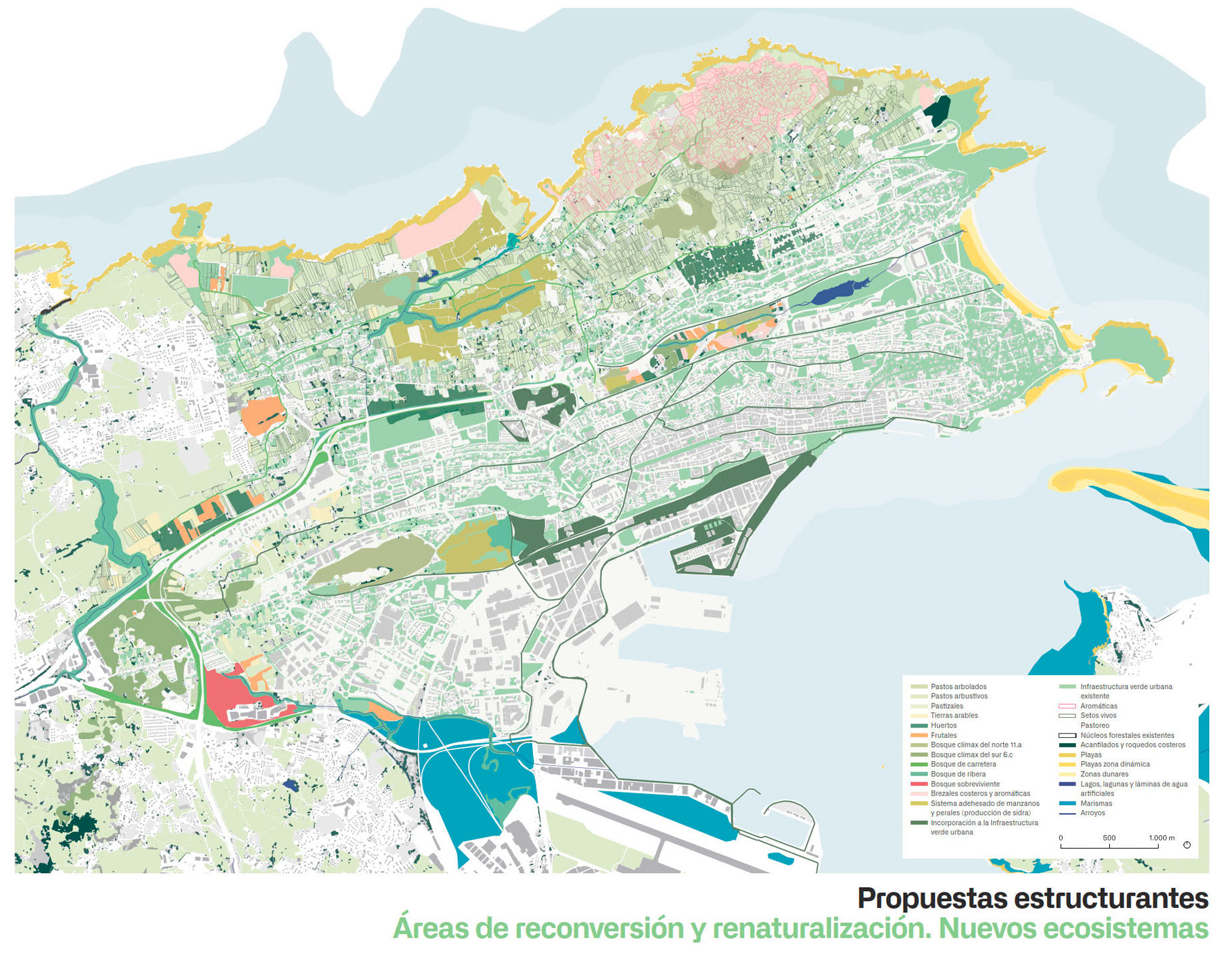
Santander, Hábitat Futuro por LANDLAB / Paisaje Transversal.
Six Transversal Projects to start the transformation of the city.
These four strategies are integrated through various projects that define different areas of opportunity for the future of the city of Santander. With them, it seeks to offer an overall vision that multiplies its effects and achieves the objectives to reach.
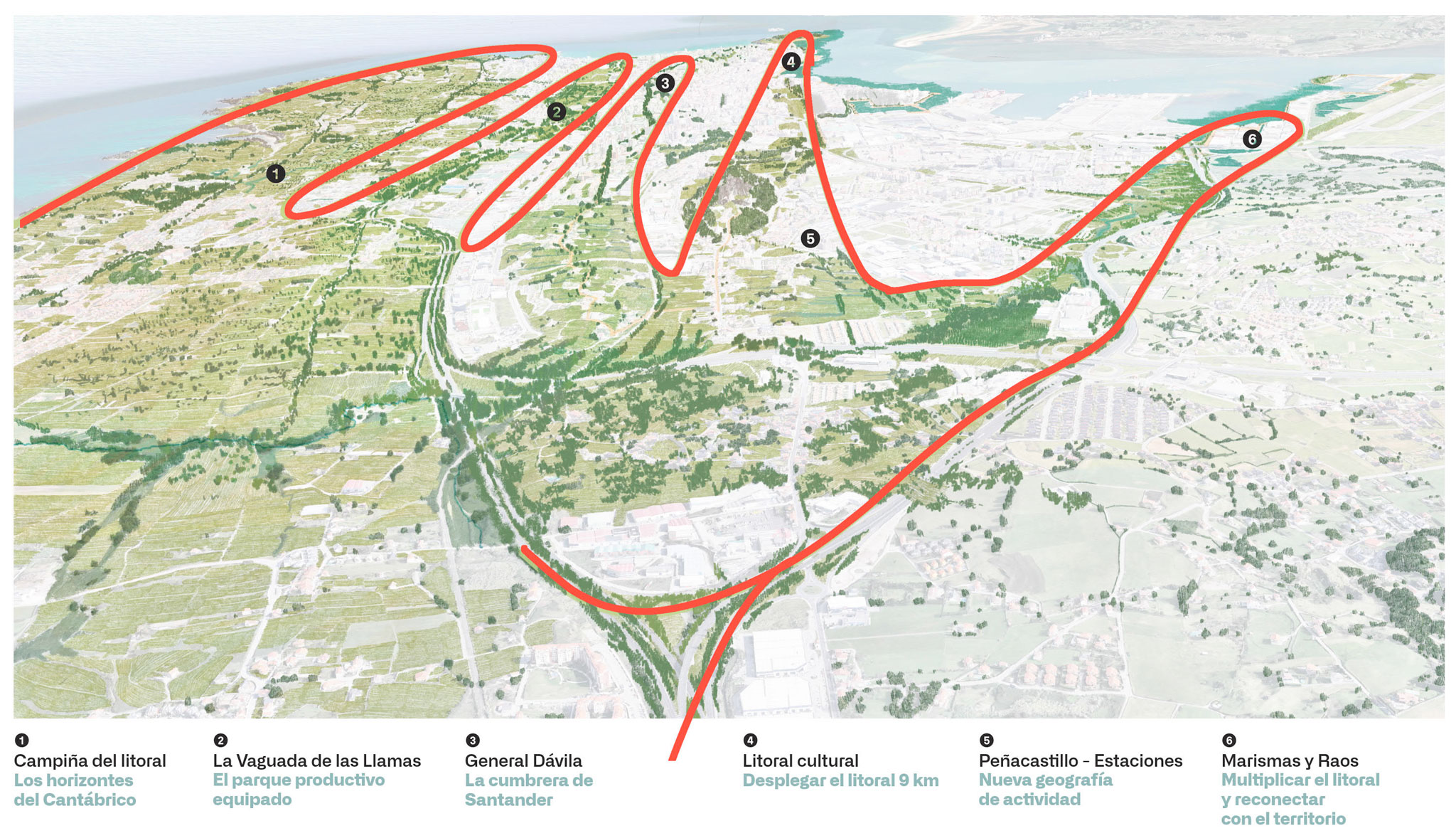
Santander, Hábitat Futuro por LANDLAB / Paisaje Transversal.
1_Coastal countryside
Food is one of the challenges of the future for cities and that is why the Coastal Countryside will play a key role in the balance between urban development and the agricultural environment and will be able to satisfy the demand for food. The project proposes to create a diverse, productive, resilient and ecologically rich landscape: a balanced mix of forest and agriculture that will articulate and connect rural areas from the city to the sea.
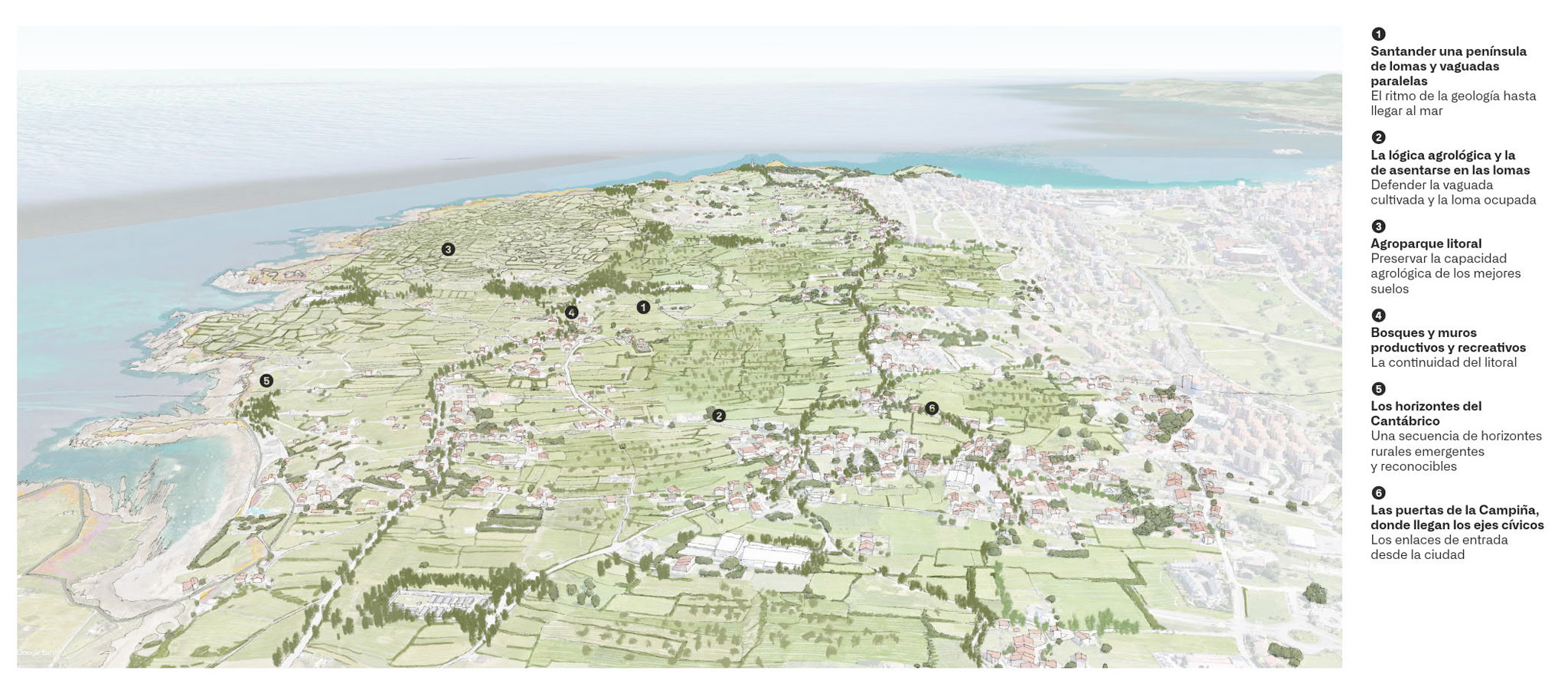
Santander, Hábitat Futuro por LANDLAB / Paisaje Transversal.
2_La Vaguada de las Llamas
It has the conditions to become an equipped recreational park, a space with a rural and urban identity that brings the countryside closer to the city and the city to the countryside. A place for biodiversity, production, learning, sports and recreation. A better, sustainable, fertile valley connected to the slopes of Los Castros and La Pereda, which multiplies accessibility opportunities and facilities. In short: a park equipped for 2055.

Santander, Hábitat Futuro por LANDLAB / Paisaje Transversal.
3_General Davila
The historic “Paseo de El Alta”, which runs from east to west along the highest line of the Santander hill, is one of the main arteries of the city, commanding views over the Bay and the “Vaguada de las Llamas” and connecting 11 of the 32 neighbourhoods of Santander. This project proposes the transformation of the street into a green corridor that favours pedestrian and cyclist mobility and turns the Paseo into a biodiversity hub, a social and commercial connector for the city.
4_Cultural coastline
Santander's unique geographical location on a south-facing bay is an important element in the culture and daily life of its inhabitants. Along its route are located many of the most significant cultural facilities in the city. The challenge lies in the opening —temporary or permanent— and revitalization of the port spaces to continue this socio-cultural axis to the Maliaño dock and create a new area open to the sea that welcomes new spaces for creation and innovation.
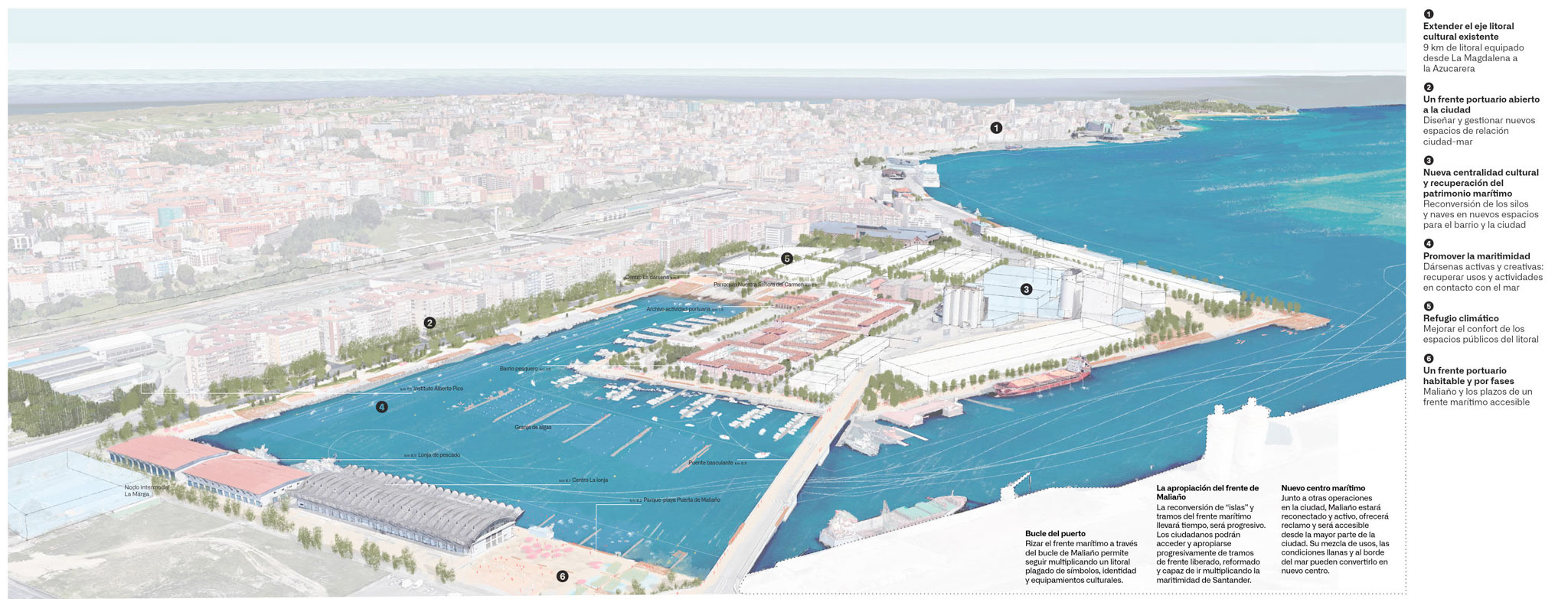
Santander, Hábitat Futuro por LANDLAB / Paisaje Transversal.
5_Peñacastillo Stations
Santander's railway space is one of the great challenges of the city. For this reason, the model must propose a project that is not limited solely to what we now understand as railway integration, but that goes further and extends from Calle Alta to Calle Castilla and from Bahía to Peñacastillo. A project where ecological and pedestrian continuity, the new filtering park, accessibility and transversal connectivity between neighbourhoods, security and economic and social reactivation are essential issues.
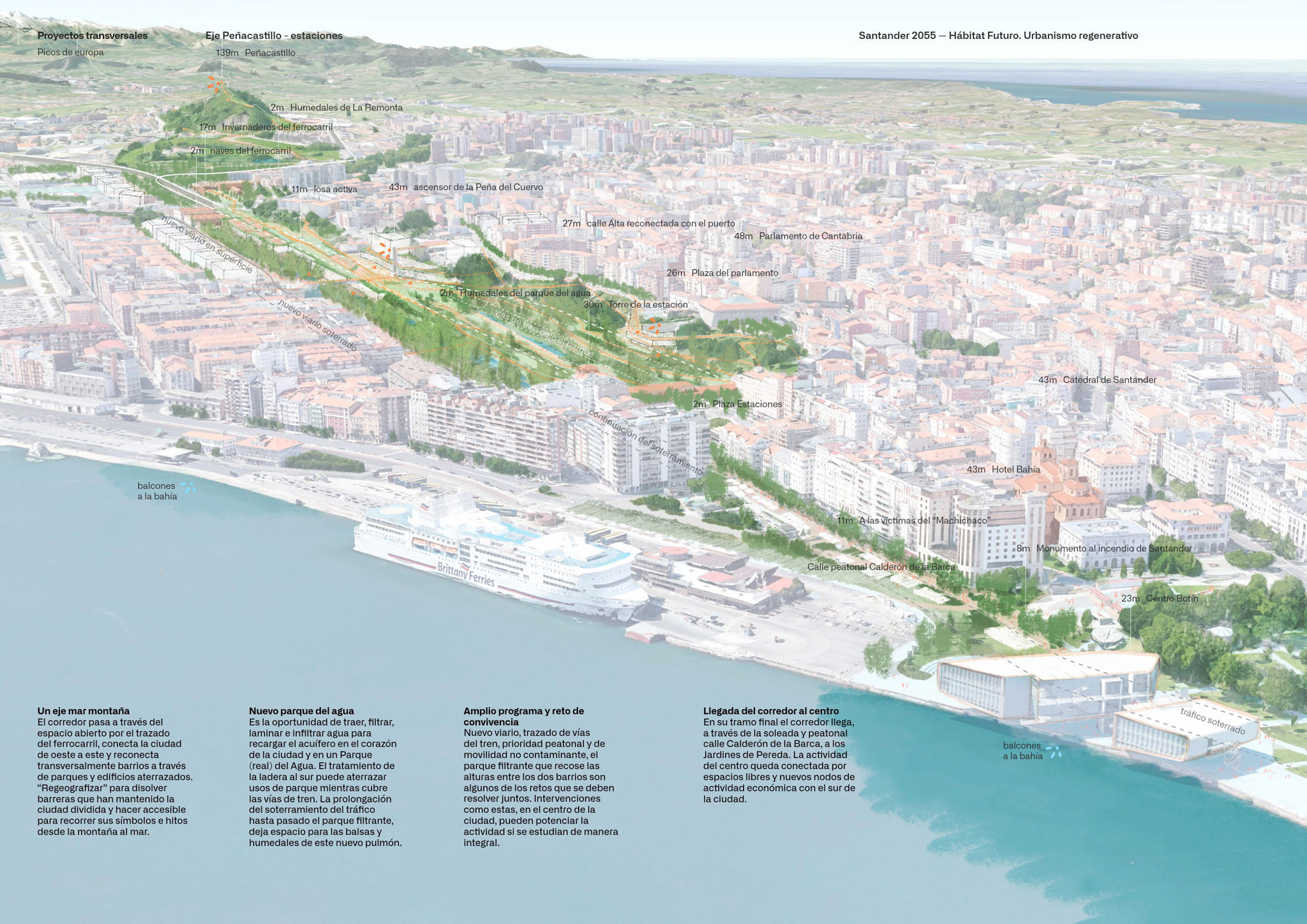
Santander, Hábitat Futuro por LANDLAB / Paisaje Transversal.
6_Marshes and Raos
Santander has an important ecological and social challenge in the area of the Bay, with ecosystems where intertidal zones, meadows and wetlands converge. An area affected by the effects of climate change is destined to be a bioregional corridor that integrates infrastructure, port activity and residential uses to achieve an attractive ecological space for citizens. In addition, the expansion of the Cantabria Science and Technology Park will contribute to revaluing existing landscapes and creating new connections in the territory.
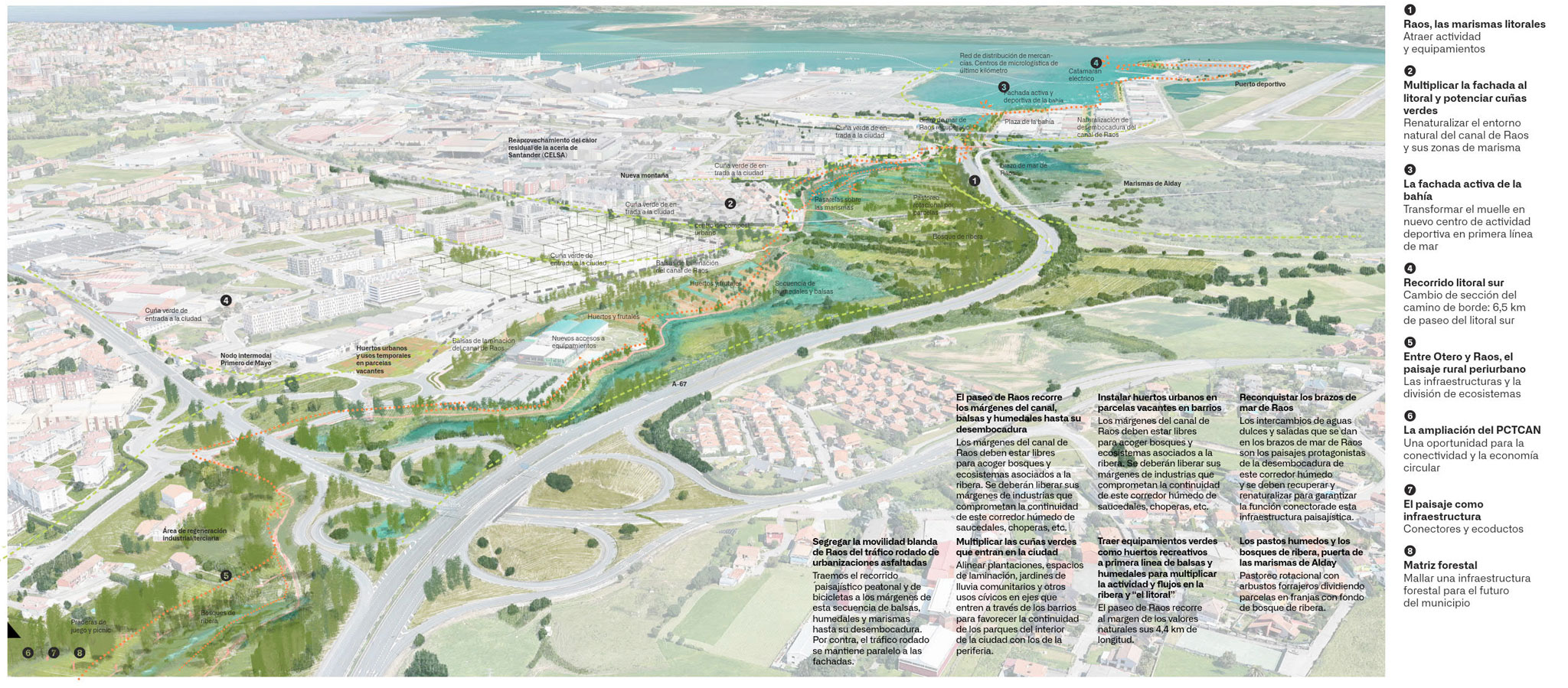
Santander, Hábitat Futuro por LANDLAB / Paisaje Transversal.
The Neighborhood Plan is a symbiosis between a strategic planning instrument and a citizen participation tool, a key issue for the development of Santander, Future Habitat and the proposed regenerative urbanism. The Neighborhood Plan contains an initial proposal for each of the 32 neighbourhoods, it is a complete x-ray that offers each neighbourhood a plan to evolve towards the city of proximity through a flexible and open plan that must be debated through spaces of technical and citizen participation. The objectives of the Neighborhood Plan are:
• Generate neighbourhood and municipal governance instruments.
• Revitalize cultural identity, and reinforce the identity and uniqueness of each of the neighbourhoods.
• Reduce inequalities between neighbourhoods.
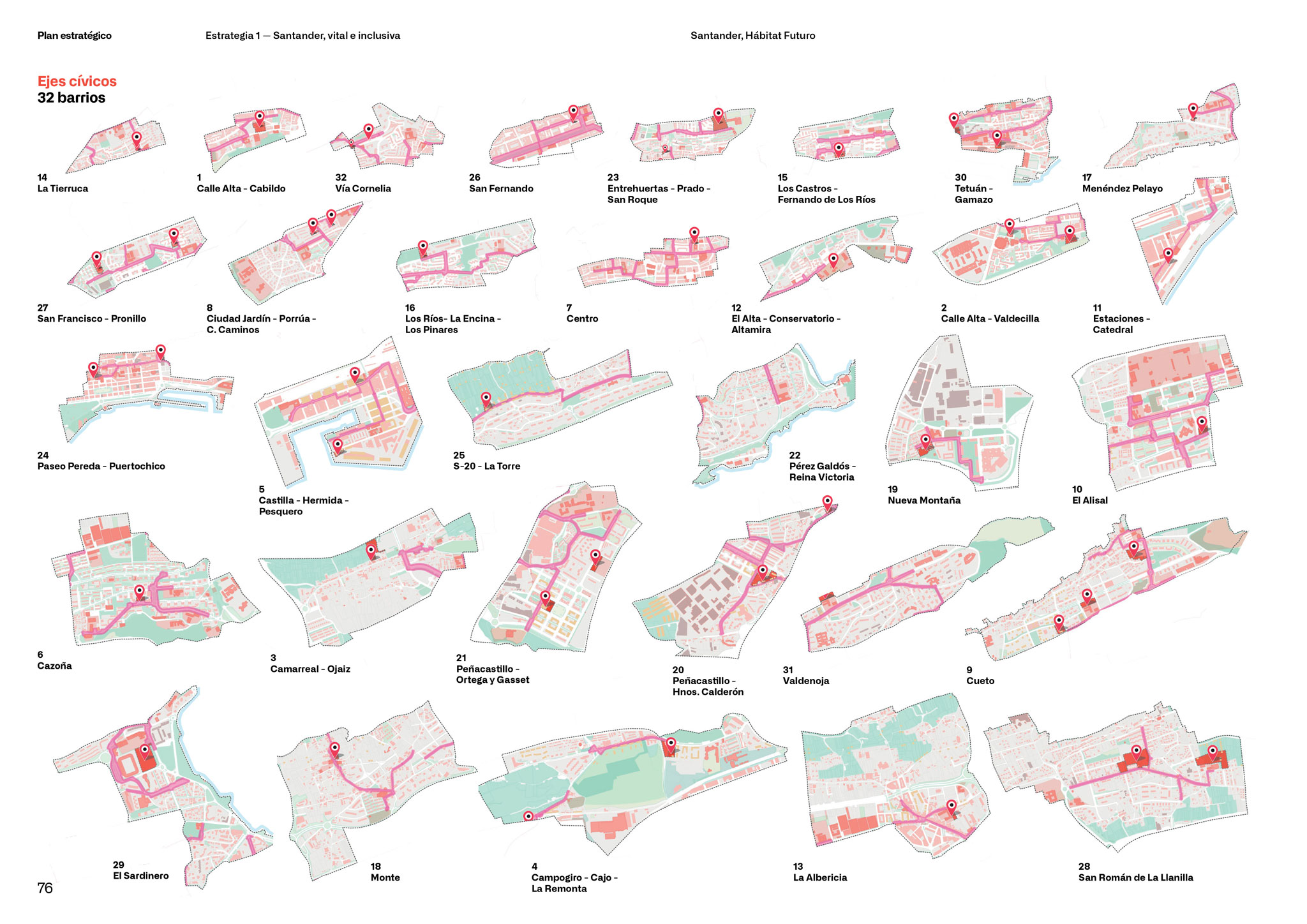
Santander, Hábitat Futuro por LANDLAB / Paisaje Transversal.
• Public, inclusive and connected space.
• Culture and participation, heritage and identity.
• Social rights, equality, health and public services.
• Economic promotion, productive and educational opportunities.
• Ecology, climate change and circular management of resources.

Santander, Hábitat Futuro por LANDLAB / Paisaje Transversal.

Santander, Hábitat Futuro por LANDLAB / Paisaje Transversal.
With Future Habitat, Santander will be 2055 a circular, sustainable, resilient, structured, prosperous, vital and inclusive city. A better city.





































